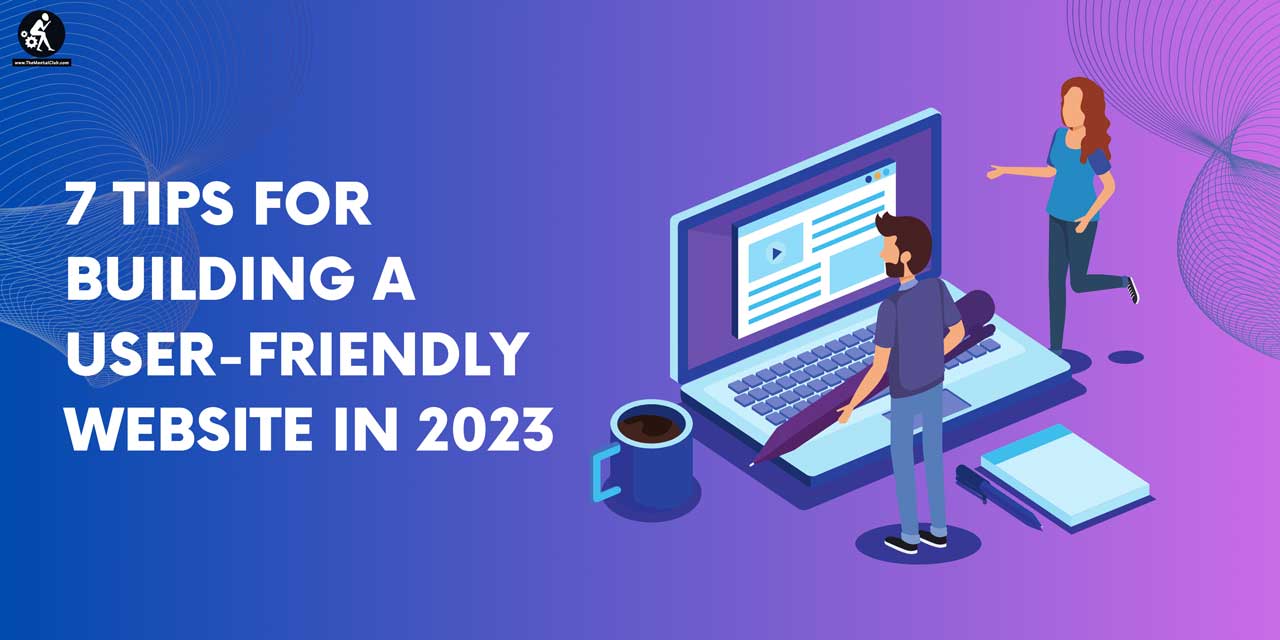As we move further into the digital age, the design and functionality of websites have never been more crucial. Having a user friendly website is akin to having a welcoming digital storefront.
It’s the difference between a user staying to browse or leaving and never coming back. So, what does it take to build a user-friendly website in 2023?
Importance of User-Friendly Web Design
A well-designed, user-friendly website builds trust with your audience. Users are more likely to engage with a site that appears professional, clean, and easy to navigate. It’s just like walking into a well-kept store – you feel more at ease and ready to engage with the products or services on offer.

Moreover, Google values user-friendly design. Its algorithms are increasingly sophisticated, and they reward sites that offer a good user experience with higher rankings. But how exactly can we create a user-friendly website?
Tip #1: Prioritize Simplicity
Remember the age-old adage: less is more. Minimalism is not just a trend; it’s a powerful design philosophy that puts the user’s needs at the forefront. By decluttering your site, you make it easier for users to find what they’re looking for.
A clean and straightforward interface with well-placed visuals or graphics can communicate your message more effectively than a cluttered site full of information. Remember, functionality should never be sacrificed for aesthetics!
Tip #2: Ensure Your Site is Mobile-Friendly
With more people browsing on their smartphones than ever, it’s critical that your site is optimized for mobile use. If your site isn’t mobile-friendly, you risk losing a significant portion of your audience.
Moreover, Google prioritizes mobile-friendly websites in its search results. Ensuring your site is responsive on all devices is not just a user-friendly practice; it’s a smart SEO strategy.
Tip #3: Enhance Your Site Speed
Slow load times are a major turn-off for users. A laggy site can lead to high bounce rates and lower user engagement. In this age of instant gratification, speed matters.
There are several tools available that can help you improve your site speed, such as Google PageSpeed Insights. Remember, a faster site equates to a more user-friendly site.
Tip #4: Make Navigation Intuitive
Imagine walking into a store where all the products are randomly placed, with no signage to guide you. Confusing, right? This same principle applies to websites. A clear and intuitive navigation menu allows users to find what they need quickly and effortlessly.
Your website’s menu should be structured logically and predictably. It’s best to limit the number of menu items and avoid jargon. Your aim is to guide users, not to confuse them. Remember, a well-structured navigation system can make or break a user’s experience on your website.
Tip #5: Use High-Quality Images and Video
High-quality visuals can significantly enhance a user’s experience on your site. They capture attention, break up text, and help to convey your brand’s story. However, it’s important to strike a balance – overloading your site with large, unoptimized images or videos can slow it down, leading to a poor user experience.
Ensure all images and videos are optimized for web use to prevent slow load times. Compress your files without sacrificing quality and use appropriate formats. Remember, visuals are a key part of a user-friendly website, but they need to be used responsibly.
Tip #6: Be Accessible to All Users
Web accessibility means ensuring your website can be used by all people, including those with disabilities. This includes individuals with visual impairments, hearing loss, and motor disabilities.
- Make sure all functions can be performed using the keyboard alone and that your content is readable by screen readers.
- Use alt text for images, provide captions for videos, and ensure your site is navigable using only a keyboard.
- Not only is this a user-friendly practice, it’s also a legal requirement in many regions.
Tip #7: Keep Content Fresh and Relevant
Users come to your website for a reason – they are looking for something. Whether it’s a product, service, or information, what they find needs to be up-to-date and relevant. A user-friendly website provides timely and applicable content that fulfills the user’s needs.
Make it a habit to regularly update your website’s content. Remove outdated information, add new products or services, and provide fresh blog posts or articles. This will not only keep users engaged but also signal to search engines that your site is active, boosting your SEO.
Conclusion
Building a user-friendly website doesn’t have to be daunting. By keeping things simple, ensuring mobile compatibility, and optimizing your site’s speed, you’re well on your way to a website that’s not only user-friendly but also SEO-friendly.


































